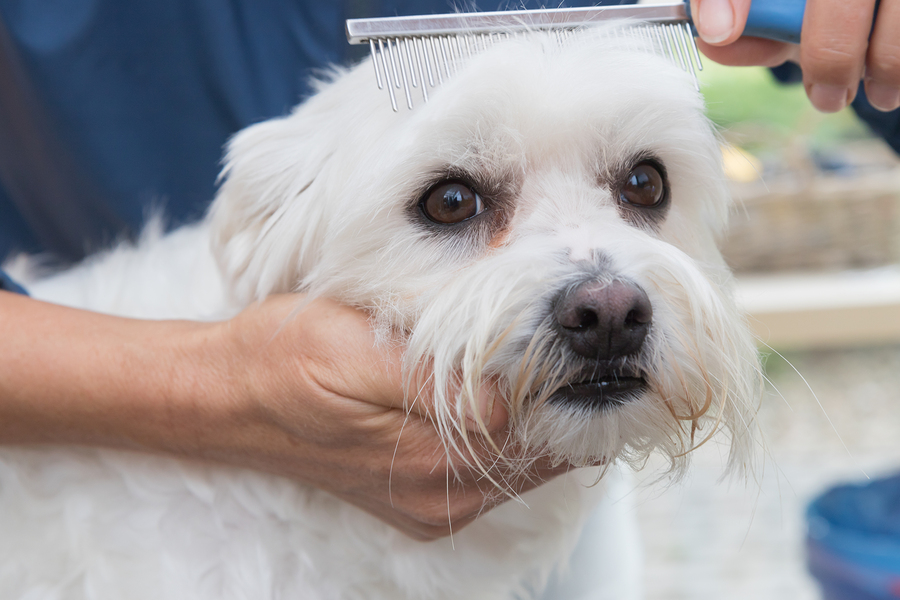One of the top questions I recieve is about how to remove tear stains from the fur of white dogs and cats. Far less frequently do people ask a far more important question: why their pet has these stains in the first place!
Here’s how I responded to a reader:
Q: I have a 7-year-old female poodle-bichon frise, and I have to clean beneath her eyes every day because they tear so much. The staining eventually turns dark brown. What can I do to stop the weeping?
A: This is a common question asked by owners of white or light-colored dogs. Bichons, poodles, Maltese, Shih Tzu and Lhasa apso are among the breeds often seen with reddish-brown tear stains beneath the eyes, but any dog can have this problem.
The stains can have many possible causes. They include blocked tear ducts, ingrown eyelashes, dental issues such as retained baby teeth, or eye or ear infections.
Sometimes eyelashes grow where they’re not supposed to, emerging from glands within the eyelid, rubbing against and irritating the cornea. This condition, called distichiasis, can be hereditary. Depending on its severity, dogs may need eye ointments or surgery to relieve the irritation. Ointments help to lubricate the eye while surgery destroys the hair follicles. Your veterinarian can pluck the hairs, but this is only a temporary fix and must be repeated every month or two.
Eye infections or dental infections can cause excessive tearing. Your dog may need a course of antibiotics or surgical removal of an abscessed tooth or baby teeth that didn’t fall out.
Note that eye stain removers contain low levels of antibiotics. The FDA issued a warning to the manufacturers in 2014 about these products because the drugs are not approved for removing tear stains in dogs and cats and have not been reviewed by the FDA for safety and effectiveness.
This is usually much more than a cosmetic issue. The best thing you can do is to take your dog to the veterinarian or a veterinary ophthalmologist to get to the root of the problem.
Read more, including why cats love boxes, in this week’s Pet Connection!


